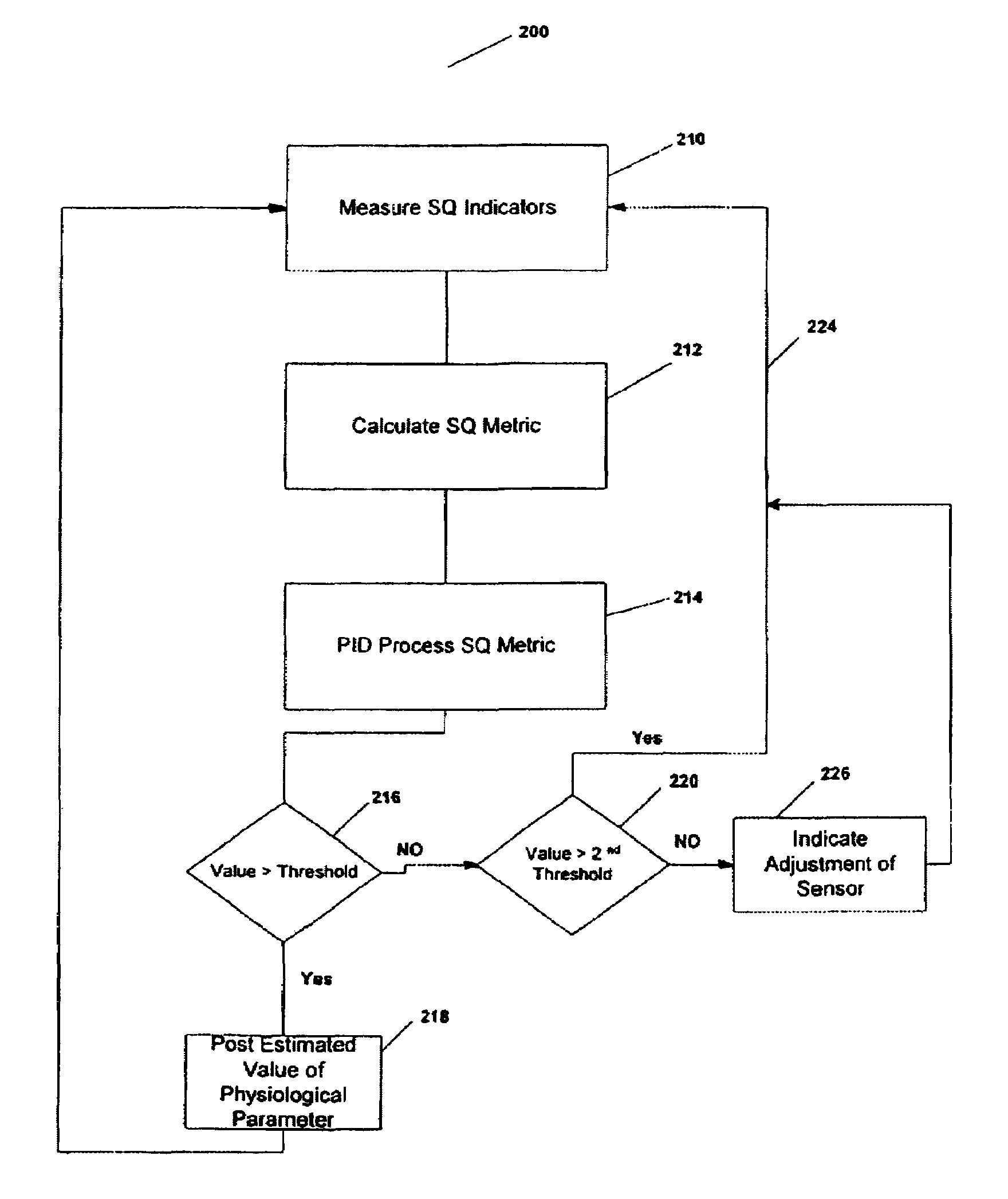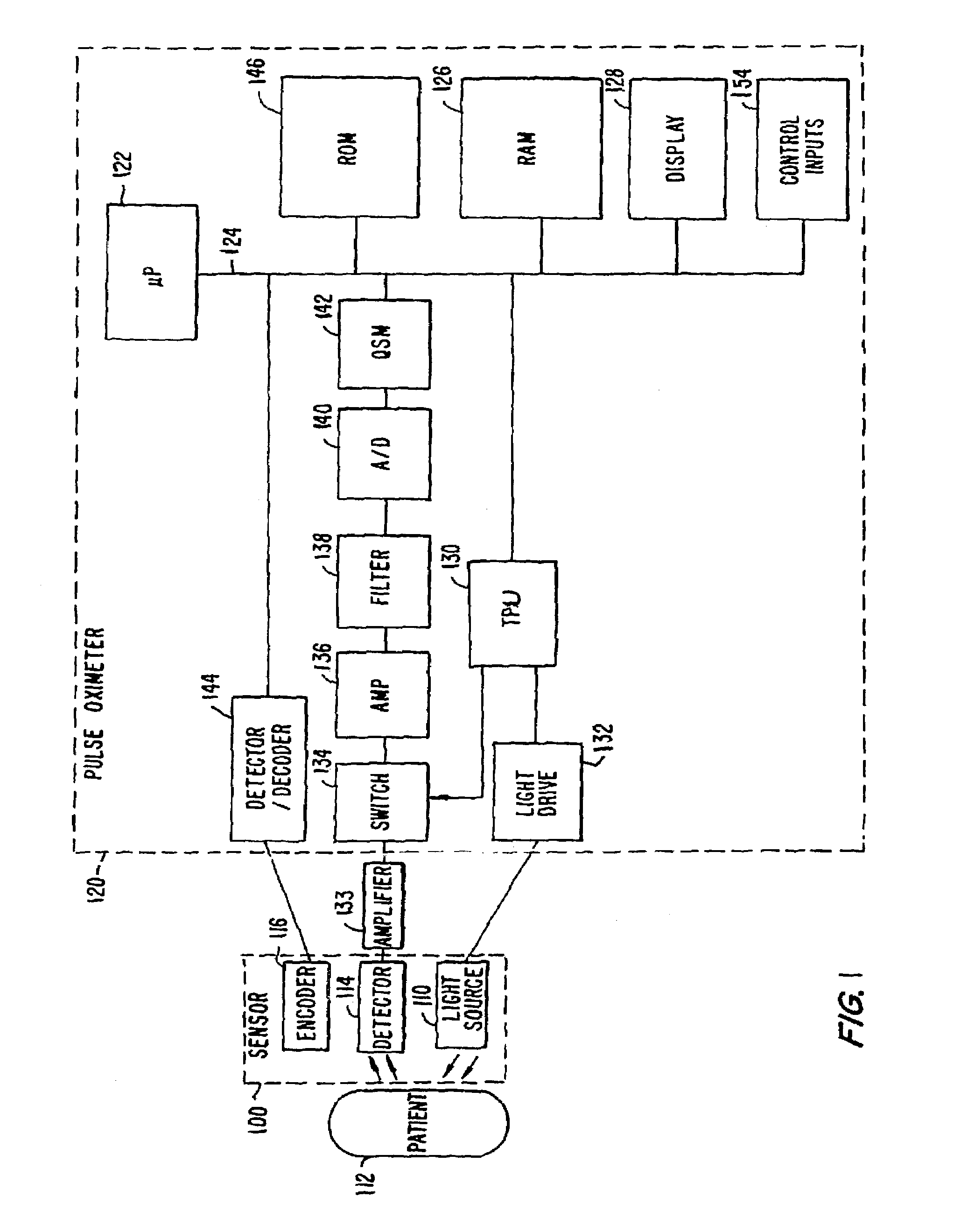Signal quality metrics design for qualifying data for a physiological monitor
- Summary
- Abstract
- Description
- Claims
- Application Information
AI Technical Summary
Benefits of technology
Problems solved by technology
Method used
Image
Examples
Embodiment Construction
[0012]Embodiments of the present invention describe a physiological monitor and sensor incorporating methods and systems that quantitatively estimate signal quality, and based on that estimate of signal quality decide whether to display the measured physiologic parameter and / or provide feedback to guide the clinician to adjust the location of the sensor. The signal quality estimate is based on the measurement of a plurality of signal quality indicators which when combined provide a quantitative measure of signal quality.
[0013]The invention is particularly applicable to and will be explained by reference to measurements of oxygen saturation of hemoglobin in arterial blood and patient hear rate, as in pulse oximeter monitors and pulse oximetry sensors. However, it should be realized the invention is equally applicable to any generalized patient monitor and associated patient sensor, such as ECG, blood pressure, temperature, etc., and is not limited to use only with oximetry or pulse o...
PUM
 Login to View More
Login to View More Abstract
Description
Claims
Application Information
 Login to View More
Login to View More - R&D
- Intellectual Property
- Life Sciences
- Materials
- Tech Scout
- Unparalleled Data Quality
- Higher Quality Content
- 60% Fewer Hallucinations
Browse by: Latest US Patents, China's latest patents, Technical Efficacy Thesaurus, Application Domain, Technology Topic, Popular Technical Reports.
© 2025 PatSnap. All rights reserved.Legal|Privacy policy|Modern Slavery Act Transparency Statement|Sitemap|About US| Contact US: help@patsnap.com



